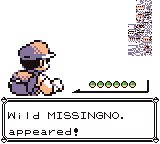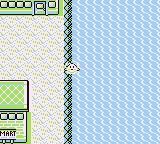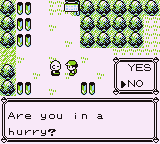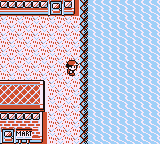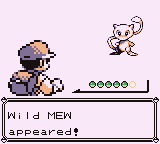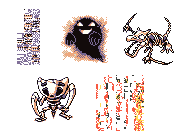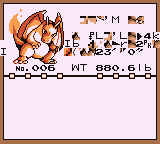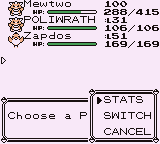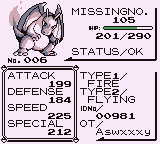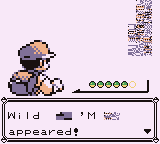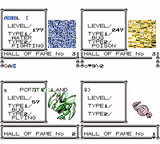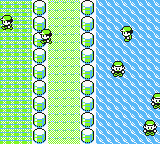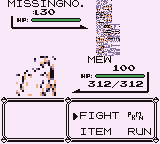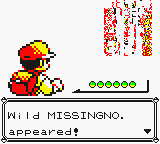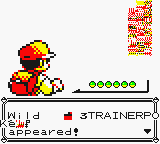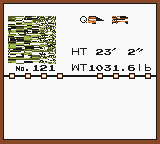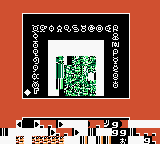MissingNo.
Wild Error Appeared!
Article originally published on August 14, 2014 and expanded in 2020. It is an introduction to the topic, far from being 100% complete; if nothing else, at the time it was the most in-depth discussion that existed on the subject of MissingNo., including several backgrounds that were totally unknown to the public (or, sometimes, willingly kept a secret by ROM Hacker insiders) at the time (e.g.: the existence of the 190 species, the removed Pokémon cries, the limits on usable Pokémon palettes, etc.). We still do not know to which extent the amount of knowledge that is shared today would have been published and made available as it is now without the first version of this article being published in 2014: for that matters, many undisclosed secrets could as well have been kept hidden to the public for many years if not decades more. We would not have known if it really happened.
I decided to open this informative discussion based on my knowledge and experience as a 1st Generation-Pokémon games ROM hacker. I have discovered that on many amateur Pokémon forums, as well as on external links to the Evil En-cyclop-edia, there is tons of misleading information regarding MissingNo., including stories like that MissingNo. is Kanghaskhan's cub or that it erases all game data as soon as it is encountered. Here I will put everything about him and what I discovered thanks to hacking.
But let's start from the beginning.
THE ORIGINS
What is a MissingNo.?
MissingNo. is a glitch (i.e.: game error) “Pokémon” that is Normal\Bird-type (the latter being a unused leftover type left in the game), and it is the world’s most infamous glitch.
INDEX
What does MissingNo. mean?
Where do I find a MissingNo.?
What really is MissingNo.?
Interlude: The Reason for the MissingNo. Glitches.
The Alternative Forms
Special Case: Charizard ‘M \ Luxor
Nullis Case: The Zero \ ‘M Block
Cold Case: Was Mew a MissingNo.?
The effects
To recap
Appendix: MissingNo. in Pokémon Yellow
Appendix: MissingNo. in later Generations, Gen.2 and Gen.3
Credits
• What does MissingNo. mean?
MissingNo. means “Missing Number (No.)”, in short they are “Pokemon that aren't there”: the game mistakenly interprets other parts of the content of the internal data as Pokémon, data that has nothing to do with it nothing with data about the Pokémon (such as type, stats, image, etc.) and this leads to various side effects, including:
Its strange aspect: the game, in the case of MissingNo., does not use compressed sprites like those used for Pokémon, but erroneously uses binary data which is mistakenly interpreted by the ASM image decompression routine from RDLE format to .2bpp as if it were a sprite. Furthermore, the dimensions of the erroneous sprite are themselves erroneous, enclosed within a “square” of 8*8 tiles of 8 pixels which, due to the maximum limit of 7*7 tiles, causes the sprite to fold in on itself , taking on its characteristic “L” shape as well as its pixelated appearance.
An anomalous moveset consisting of Water Gun (repeated twice) and Aerial Attack, mistakenly taken from the data associated with the trainers’ Pokémon teams (in this case, from one of the bikers on Route 16).
An erroneous PokéDex number that causes, every time it is encountered, an erroneous flag used for registering seen Pokémon in the PokéDex to be overwritten in the flag used for the quantity of the 6th Backpack Item: this is known as the Item Duplication Glitch, and is exploited for exploits such as infinite objects and the like. If captured, a similar effect will be had for an object several positions beyond the backpack (at the 16th, if I remember correctly).
Looking at its front sprite, due to its incorrect size, causes the sprites in use in the game to be temporarily glitched (one of the reasons that led to the myths about the cancellation of the game). To resolve the bug, it is simply needed triggering a routine that “restores” the display of the sprites: that is, by displaying any entry in the PokéDex, or by displaying the statistics of a Pokémon.
Also due to this, the Hall of Fame becomes corrupted, as several memory addresses are mistakenly overwritten with junk data.
MissingNo. generally uses a verse similar to that of Nidoran♂: in some cases it uses unique verses instead, and the reason will be explained shortly below.
Again due to this mysterious reason, MissingNo. has 5 alternative forms in which to manifest itself.
• Where and how do I find a MissingNo.?
MissingNo. it is found much more easily in the Japanese and English versions of Pokémon Red and Blue since the programmers have fixed some things (but not all) for the international publications (for instance, in the Italian and Spanish versions), and therefore in other versions it is much more difficult to encounter it, due to the tuning and removal of problems that meant MissingNo. could be encountered more easily.
The glitch was discovered in the English versions in 1999 (supposedly, in December) following the previously known bug known as the Safari Trick, a bug that allows you to capture Pokémon of the Safari Zone outside the Safari Zone by Surfing near the east coast of Cinnamon Island - a tile incorrectly programmed to make land Pokémon appear even though the player is Surfing.
Cinnamon Island is not programmed to override land Pokemon as it has none: this means that the land Pokémon encountered via the coastal tile bug are the land Pokémon from the last area visited in the game. However, through further glitches, it is possible to overwrite this area of WRAM memory so such as to force the game to make different Pokémon appear while carrying out this exploit.
To this end, a very well-known bug is created, namely the MissingNo. Bug: you talk to the old man NPC from Viridian City and answer “No”, thus activating the event of the Pokémon capture demonstration (causing its event to overwrite the memory area reserved for the ID of the wild land pokemon encountered). Next, the Safari Trick is performed: Fly to Cinnamon Island and go Surfing up and down the East coast tile (i.e.: the coastal tile to the “right” of the map) and, based on various conditions that I will illustrate, you may have the possibility of finding a MissingNo.
The type of MissingNo. encountered depends on the player’s name: when talking to the old man from Viridian City the game must display the name “OLD MAN” instead of the player’s name, so the player's name is saved in another part of the theoretically glitch-proof WRAM as it is assumed to be continuously overwritten (which does not happen in Cinnamon Island and Route 20). After the sequence the player resumes his name that was saved in that WRAM memory address, except that a copy of the name remains in that part of the game anyway until it is overwritten as soon as you enter an area infested with Pokémon encountered on the ground/tall grass rather than in the water.
The problem is that this name is saved in a part of RAM reserved for wild Pokémon to be encountered in an area, meaning that the data saved there temporarily can be used for misunderstanding purposes to load pokemon whose identity and level will reflect the hexadecimal equivalent of the letters in use in the player’s name, so the name chosen determines everything.
The game in fact lists the wild Pokémon that can be encountered according to the model:
2 Bytes; Byte01 = Pokémon’s Level, Byte02= Pokémon’s Internal ID.
Depending on which letter constitutes the player’s name (consisting of 7 bytes), there will be an erroneous correspondence between letters switched as hexadecimal currency - letters and numbers (which vary between international and Japanese versions) are included within a “range” 0x80 ( corresponding to “Capital A”) - 0xFF (corresponding to the “9” number character), with the addition of the space character (0x7F). This also explains the reasons for the exaggeratedly high levels of the Pokémon encountered according to this glitch sequence (often over Lv100). If you want to meet all the unique forms of MissingNo., the only name that works is “Aswxxxy” (case sensitive).
The international versions, in particular the Italian Version and the Spanish Version, remedy this bug by ensuring that the coastal tile on the west bank only makes water Pokémon appear, effectively defusing the glitch. To encounter MissingNo. in these two versions, much more sophisticated glitches are needed (including the famous Mew Glitch discovered in 2006).
• What really is MissingNo.?
A game error. A missing Pokémon interpreted as such. A curse. An incredible series of fortuitous coincidences. However, I prefer to consider it a miracle. But now, some backgrounds.
As already mentioned, there are 5 "forms" of MissingNo.:
(Starting from the image in the top left corner, wrapping to the left)
The most famous (Basic Shape) made up of pixels;
MissingNo. Ghost (with the Lavender Town Ghost sprite);
MissingNo. Aerofossil (with the Aerodactyl Fossil sprite);
MissingNo. Kabutops (with the Kabutops Fossil sprite);
'M Block (a more unstable variant of MissingNo.) - Note: The image instead represents the MissingNo. version encountered in Pokémon Yellow, much more dangerous and unstable due to potentially fatal glitches it causes to the running game due to the overwriting of different WRAM addresses, which in Yellow differ from the ones affected in Red and Blue.
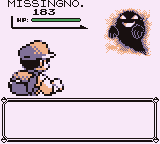
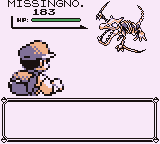
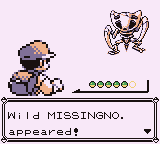
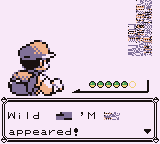
In reality there are not only 5 MissingNo.
Now a brief introductory explanation is necessary before revealing the true nature and origin of MissingNo.
In the games of the first generations (Gen.1 and Gen.2) the maximum number that can be represented by a Byte is 255 (0xFF in hexadecimal), and often the elements that make up a list (as in the case of Pokémon) are ordered according to a certain order, i.e. 1 Pokémon for each byte. Keeping in mind that each Pokémon is indexed according to an internal ID in the game, theoretically there could be a maximum of 255 Pokémon (omitting the zero, i.e. byte 0x00), but given that in Generation 1 “only” 151 species are in use, it follows that there are as many as 104 MissingNo.
MissingNo. are not all the same: there are 39 “stable” and 65 “unstable” ones.
But why this difference? Here comes the intrigue.
The 39 “stable” MissingNo. are nothing more than 39 species of Pokémon removed from the game. No, it's not Munna (even though, as later ascertained by the 2020 “Leaku” or Giga-Leak, in fact among the Pokémon removed from the First Generation there was also the fabled evolution of Raichu: Blazichu).
According to a statement from one of the programmers of Pokémon Red and Green, there were originally supposed to be 190 Pokémon instead of 151. This is confirmed by an internal check in the game which checks that the invalid Pokémon are only those beyond the internal numeric 190 decimal, as well as by a further block on the palettes for Pokémon whose ID is greater than 190.
Who all 39 removed Pokémon are is a mystery, although there are important clues to their identity both in the sketchbook of Satoshi Tajiri (the Pokémon designer) as well as in the “Pre-Release Red\Green Assets Leak” leaked by Helix Chamber in 2019 and later by Ganix in 2020. Some of them will end up being omitted even from subsequent generations (including the original basic forms of Goldeen and Meowth), others are discarded intermediate forms (including intermediate evolutive stages of Magnemite, Psyduck, etc.), others are removed third evolutions (the evolution of Raichu and Marowak being the most infamous ones), alternative evos that highlight the once different kinship of different later related Pokémon (the original evolution of Wartortle, one pre-evolution of Blastoise) while others would seem to have never seen the light of the sun (including the famous Elecoil and its two evos, whose basic form and third stage were planned for the second generation games but unfortunately discarded).
But is there concrete evidence in the game that attests that MissingNo. is in fact a series of Pokémon removed from the game? Of course: there is also tangible evidence from the players, as well as a whole series of elements traceable within the game. This is where my experiences in the field come in.
While carrying out my 1st-Generation ROM hack Pokémon Grape I noticed that there are several Pokémon cries never used in the game which are instead used by 8 MissingNo among the 39 “stable” ones. Two of these are disconcerting: one of them is perfectly identical to that of Crobat, while the other is identical to that of Togepi. These 8 verses attest that at least 8 species of Pokémon were eliminated at the last moment, to the point that the their elimination occurred so late that these last 8 verses were not eliminated from the data relating to the Pokémon’s verses. Which makes sense: each byte of memory can contain 8 bits of flags (1 bit = 1 Pokemon), which means that, at eliminating 1 byte of unused WRAM memory from the game, it became necessary to eliminate at least 8 Pokémon species. In any case, the presence of these verses confirms the elimination of several Pokémon species from the game, now re-used inappropriately in the form of the MissingNo. glitch.
Many years later, during the 2020 “Leaku”, it was discovered that entire evolutionary families of Pokémon were shortened or eliminated completely and some unused verses were “recycled” for the Second Generation games. To be precise, the species eliminated from the game were precisely 39. This also explains the presence of an unused type of verse similar to that of Zubat: originally, it should have been the verse of the discarded pre-evolution Zubat (dubbed Wubat by fans).
To date, however, it is still not certain whether the 8 Pokémon in question were simply removed at the last minute or, according to a much more macabre theory, they were in turn reintroduced after the elimination of the 40 “excess” Pokémon and then discarded again. The doubt arises following leaks that appeared to suggest that some of these species should have appeared exclusively in Pokémon Yellow and the hypothetical Pokémon Pink when they were still conceived as intermediate versions of Pokémon 2 Gold/Silver (the one presented at Spaceworld 1997). However, as of today, there is still no certainty in this regard.
Therefore 39 MissingNo. they are deleted Pokémon that are now empty space as they have been placed and removed. How do we have this certainty, beyond coincidences? Is there concrete evidence that demonstrates this in all respects? Yes: specifically, in the game's internal data there are several instances of data deleted and/or replaced with placeholders.
Unlike subsequent generations, in the game's internal data of Pokémon Red, Green, Blue and Yellow the Pokémon were not placed in Pokédex order but in order of creation: in this order there are evident unused spaces between certain Pokémon, namely 39 emptied spaces. Among other things, the name MissingNo. is not coincidental: it is a “dummy” name used as a substitute to eliminate the names of the 39 Pokémon species eliminated from the game (the name is thus written 39 times within the game). Therefore, unlike the popular beliefs, the eliminated spaces do not correspond at all to numbers considered unlucky in Japanese tradition, but rather correspond to 39 species of Pokémon evidently considered superfluous - especially in the case of intermediate evolutions that were then discarded (e.g. Pearduck, the intermediate evolution between Psyduck and Golduck). This fact was confirmed by the late addition of the final evolutions and intermediate versions of the Starters (including for example Wartortle) and relatively late additions of Pokémon - including the Oddish evolutionary family, due to the lack of Grass-type Pokémon in the game.
• Interlude: The Reason for the MissingNo Glitches
What explains all those glitches?
Simple: the incorrect loading of Pokémon statistics, which occurs in a convoluted manner in the First Generation games. Each Pokémon, being sorted according to an internal ID, is then associated with a PokéDex number according to a special table which assigns each Pokémon indexed according to the internal ID to a PokéDex number. This special function is also used to assign its statistics to each Pokémon according to the corresponding order it has in the PokéDex.
The problem consists in the fact that the 39 Pokémon eliminated from the game (the 39 “stable” MissingNos) do not have a Pokédex number associated with them, and therefore in this table the PokeDex number appears to be 0x00. This 0x00, however, is not understood by the game as “empty” but , in contrast, is incorrectly interpreted as “number 256” due to an underflow error. The MissingNo. are therefore accidentally interpreted by the game as Pokémon whose PokéDex number is 256. Therefore, MissingNo.’s statistics would be those of a Pokémon placed in the 256th position in the table of data associated with statistics.
Unfortunately, as there are “only” 151 Pokémon in the 1st Generation games, the data borrowed from the game is not relevant data and is therefore data used inappropriately which triggers the whole series of glitches associated with MissingNo.
• Alternative forms
In addition to all this, there are 3 internal “dummy” IDs of unused Pokémon that are used solely for the use of the two Pewter Museum Fossils and the Lavender Town Ghost sprites.
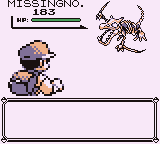
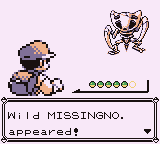
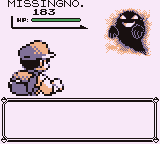
The game uses an exploit whereby it automatically loads these 3 sprites when the ID of one of these three “dummy” Pokémon is used in a sequence of ASM codes that acts as a script (for example, in the Pewter City Museum). Fortuitously, these 3 unused Pokémon are in effect MissingNo., therefore they behave as such, with the notable difference that the front sprites of these 3 forms are stable sprites that partially omit many of the unwanted effects of the MissingNo. glitch (including sprite corruption), although they use the same “glitch” statistics shared by all the other stable MissingNo.
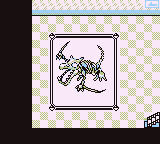
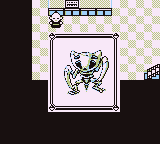
The other 66 “unstable” MissingNo. are simply unusable spaces that were not meant to be used for other Pokémon species, since no Pokémon beyond the number 190 had been conceived. These MissingNo. are the most “harmful” ones because they were not intended as Pokémon at all, they are “garbage” data, which however can be interesting in certain cases.
Unlike the 39 stable MissingNo., the 66 unstable MissingNo. inherit the statistics and the number of PokéDex not from position 256 (due to the reading of byte 0x00 placed in the game data as a form of “deletion” of the PokéDex number once used by the 39 stable MissingNo.), but rather they inherit their respectibe PokéDex number from the various “erroneous” data placed outside the statistics data table: that is, from the game’s trainer data, which is placed immediately after them in the game’s ROM data.
This means that each of the 66 “unstable” MissingNos has unique characteristics, unique movesets, and even evolutions, often anomalous and accessible to levels unattainable except through exploits and glitches. Some of them even use glitch moves capable of seriously corrupting the game, including the infamous “TMTRAINER” move, otherwise known as “Super Glitch” due to the level of extreme corruption (often random) that it exerts in the game (with the remote possibility of even damaging the real hardware of the Game Boy in certain extreme cases, especially when it accidentally disables the GameBoy Interrupts).
That of the 66 unstable MissingNos is perhaps the only concrete one case of danger for the game (due to the Super Glitch, triggerable during a Pokémon battle), although most of them are simply unusable.
• Special Case: Charizard ‘M \ Luxor
Why did I mention earlier that there are 65 unstable MissingNo. whereas I later declared that they are 66? Did I invent one?
No: there is a rather unique “unstable” MissingNo., that is, the one who uses the internal ID #255 (0xFF), and is called ‘M (or ‘M Block). A notable peculiarity of this MissingNo. is the use of the Charizard sprite, as well as the glitched name whose only recognizable characters are “‘M”, which is why it was called Charizard ‘M.
This case is quite peculiar: the game, in fact, treats with great rigor all the lists that contain hexadecimal values equal to 0xFF, as this byte is often used to terminate lists. This means that ‘M Block / Charizard ‘M is actually in able to act as a “terminator” of lists - including the list of Pokémon in the team as well as the list of Pokémon in the PC Box - "hiding” all the Pokémon that are placed beyond it.
The game in fact tends to obscure the presence of further entries in the lists and lists in the menu if it encounters an object of the aforementioned list whose internal ID in the game is 0xFF (255), as it is generally used as a special byte to end the lists and indexes (e.g.: lists of objects for sale, list of elevator floors, etc).
The improper use of Charizard ‘M therefore allows the game to be deceived in order to set in motion various glitch sequences that have to do with the management of lists and lists. Again for this reason, Charizard ‘M makes the very complicated glitch of hybridizing the team’s Pokémon possible (through careful use of the Pokémon movement function within the team and/or the Box).
Opinion: I have reason to believe that ‘M Block / Charizard ‘M is at the origin of the myth of the PokéGod Luxor, given its nature of hiding (and apparently “erasing”) the team’s and Box’s Pokémon, as well as its dragon shape. Luxor confirmed?
• Nullis Case: The Zero \ ‘M Block
Obviously, if there is a MissingNo. #255 (0xFF), there is also its counterpart Zero (0x00): the so-called ‘M Block. ‘M Block essentially behaves like the other “stable” MissingNo., except that, if encountered in the wild via glitches, it causes a series of ambiguous bugs (due to use of zero in specific contexts such as the absence of wild Pokémon in the area) such as the infamous "Invisible Ditto Glitch" (the battle does not end, but continues against an invisible Ditto). The programmers didn't add a Pokémon #000 to stabilize the game, and therefore it exists too (in the 5th generation they solved this issue by creating a Pokémon #000 on purpose, namely Victini).
• Cold Case: Was Mew a MissingNo?
One of the stable Missingno. - the one that should have been the 40th - was replaced at the last moment with Mew (internal ID: 0x15), which means that there was a fortieth Pokémon eliminated from the Generation 1 games. Which makes sense : this would confirm that 190 Pokémon were actually planned, and then exactly 40 were eliminated.
However, as it was later revealed during the “2020 Giga-Leak” as well as during the previous November 2019 Helix Chamber leak, that very Pokémon discarded from the conceptual phase of the very early stages of Pokémon (when it was still titled Capsule Monsters) was Ohmega, an electric steel Dragon, seemingly partly conceived at an initial conceptual stage on the game to be created. According to persistent rumors around the material provided by Helix Chamber, Mew would have replaced the once empty position used for the removed Ohmega. Obviously, to date definitive confirmations of these rumors are still awaited.
This is all about the identity of our “being”, if we can define it that way.
THE EFFECTS
But why do players go crazy over an “aborted Pokémon”? Why are there strange legends about it? Why are Pokémon Red and Blue REALLY the best Pokémon games of all time despite the vintage graphics?
MissingNo. causes many side effects including beneficial effects that can greatly facilitate the game. Let's start with the most obvious issues.
• SIDE EFFECTS:
They are caused by the fact that the game triggers a series of events after MissingNo’s encounter, which interfere with other parts of the game (the WRAM memory) which have nothing to do with Pokémon data.
* MissingNo. ruins Hall of Fame data.
Encountering MissingNo. interferes with the Hall of Fame data, corrupting it. This occurs due to MissingNo.’s accidental sprite being too wide, which also overwrites the Hall of Fame data.
* In Pokémon Yellow MissingNo. can cause this blasphemous glitch:
People walking around the screen at random... Probably due to a corruption of the OAM, i.e. the special flags that regulate the attributes of the OverWorld mini-sprites in use (i.e., the minisprites with a transparency level). If so, this would be a fairly serious form of game corruption.
* MissingNo. messes up the graphics of the game’s sprites, overturning the sprites making them appear deformed, as if they were MissingNo. themselves.
Fixing it is easy: contrary to what is claimed, all you need to do is see the statistics of a normal Pokémon (or, alternatively, a PokéDex page) and everything is resolved. This happens due to the abnormal sprite of MissingNo., which causes the sprite flipping routine is called inappropriately, causing the sprites to be “flipped” horizontally by exchanging the 8x8 tiles that make up the sprite itself. Carrying out one of the two options indicated causes the display of the sprites to be reset in mode normal.
Nintendo spread the myth of eliminating MissingNo. and start the game again because actually MissingNo. also causes...
• BENEVOLENT EFFECTS:
* MissingNo. increases the quantity of the 6th item in the backpack by 128. This phenomenon is called Item Duplication Glitch. This means that if you keep a Rare Candy or a Master Ball at position #6 of the backpack you automatically get 128 upon encountering it Rare Candies or 128 Master Balls for free (only if the quantity is less than 128).
Why does the item quantity “glitch”? Numbers beyond 100 for item quantity in the game shouldn't even exist (the limit is 99) so, instead of the “9” character in the item number quantity, other images appear. The game stores graphical tiles in the Video RAM (i.e: volatile memory) in a section that also includes tiles like numbers and the graphics of the map; therefore, by exceeding the tile image used for number “9”, the next tile in the Video RAM shows the tile used for number “0”, and after the “0” there are tiles used for the “pieces” of the map’s landscape, called in jargon tileset. Because of this, instead of priting in the item quantity a number “100”, the video RAM loads instead another graphic element, plus the last digit of the item quantity in the range 0-9.
Yet, why does all of this happen?
When you encounter a Pokémon, the game register it in the memory as being an already seen Pokémon, so that the Pokédex can show that Pokémon later. By keeping in mind that, in 8-bit games, the maximum quantity expressed by a hexadecimal number corresponds to the decimal number 256, the problem is that there are only 151 Pokemon in the Pokédex while MissingNo. is #000: due to a problem that has to do with IT, the number “000” is interpreted by the game as being the number 256 (this issue is called Underflow), and therefore the game records the "SEEN" data for a hypothetical Pokémon #256. The problem is that this binary data (called Flag in jargon) is stored in the Flags used to determine which and how many objects the player has in the backpack (data that is stored immediately after the flags used for the Pokémon seen in the Pokédex), thus coincidentally (fortunately) increasing the quantity of one of these objects, in this case the 6th.
So MissingNo. is not just a creepypasta “monster” but it’s also an excellent resource for “cheating” without using any cheat code or Game Shark (which is definitely useful).
* Pokémon hybridization:
This is probably the least known effect, and it's also one of the coolest: not even in the 6th generation of games developers ever dreamt of hybridizing Pokémon!
Hybridizing Pokémon consists of creating a hybrid Pokémon or a Pokémon fused with another: the hybrid Pokémon inherits the moves, statistics and color(!) of the donor, so for example you can create a Pikachu hybridized with Lapras which will have the same moves as Lapras (Pikablu, LOL) but it will be an “unstable” hybrid that cannot be exchanged, to stabilize it you need to deposit it in the Day Care and withdraw it (the Day Care is not so useless after all).
This is possible thanks to the exploitation of some side effects caused by a particular ‘M Block, #255 (called Charizard 'M because it has Charizard’s sprite).
SUMMARY
In the Generation I games there is the MissingNo. glitch: an erroneous Pokémon, created from a combination of missing data and glitches.
MissingNo.’s appearance and statistics are created from statistics created by the game by mistake from internal data unrelated to Pokémon.
Since there is a maximum of 256 possible Pokémon (including zero) due to the 8bit architecture on which the game is based, and since only 151 species are in use, there are therefore 105 different types of MissingNo. if zero is included.
39 of these MissingNo. are more stable than the other 66 as they mistakenly cover the absence of 39 Pokémon species previously planned for inclusion in the game but later eliminated during development: Red and Blue's Pokémon species should have originally been 190.
66 MissingNo. are unstable as they use erroneous data of a more accidental and random nature, and are subject to more anomalous behavior such as erroneous evolutions and glitched movesets.
3 MissingNo. stables use, fortuitous reasons due to exploits within the game, unique sprites used only for the Museum Fossils and the Lavender Town Tower Ghost.
1 unstable MissingNo. takes the form of a Charizard and is able to “hide” the Pokémon of the team and of the Box placed after it due to the use of the same hexadecimal identifier used in the game to end the lists. This MissingNo. is called “Charizard ‘M” and is capable of creating Pokémon hybrids via sophisticated glitches.
1 MissingNo., known as ‘M Block, has an internal ID of 0x00 and causes a different set of unique errors and glitches.
Mew was inserted last as the Pokémon completed in place of one of the MissingNo., thus bringing the number of species eliminated from the final game to 40 instead of 39.
MissingNo. is the fortuitous result of an incredible array of glitches, bugs, and features removed from the game.
MissingNo. is probably the most famous game error in the world, deserving of myths, legends, countless gameplays, and even references within the series and in other games and ROM hacks based on the Pokémon franchise.
MissingNo. causes unpleasant effects, some permanent, others remediable in the current game and without permanent effects.
MissingNo. also causes potentially pleasant effects that maximize the gaming experience, as well as its customization and involve the addition of features not initially foreseen in the game itself.
MissingNo. can be encountered in a wide variety of glitches, mostly accessible in the Japanese and international versions of Pokémon Red, Blue, and Yellow.
MissingNo. in Yellow and in the Japanese versions is more difficult to manage: in the case of international Red and Blue, it is a fortuitous combination of factors that make it more versatile.
MissingNo., by pure coincidence, uses a removed type that remained unused in the game in the international Red and Blue versions: the Bird type.
MissingNo. sheds light on the past development of the Japanese Green, Red, and Blue versions, as well as highlights and hints at the internal workings of the game.
MissingNo. has created an entire videogaming aesthetic dedicated solely to exploiting glitches as a form of video game exploration and customization, as well as the origin of a recent (2020s) genre of ROM Hacking with an avowed Glitch aesthetic.
APPENDIX: MISSINGNO. IN POKÉMON YELLOW
Although way less popular than in Pokémon Red and Blue, MissingNo. is also found in Pokémon Yellow, albeit it has its own unique characteristics:
First of all, MissingNo. is way more unstable than in Pokémon Red and Blue, since it causes way more glitches, including several freezing glitches and, in a few instances, even audio corruption.
MissingNo. is differently shaped in Pokémon Yellow, having a more garbled appearance. As a consequence of the trainers’ Super-Palette in Yellow being red and yellow, MissingNo. features these colors instead.
MissingNo.’s types are different in Pokémon Yellow, being Normal as a first type and a random glitch type as a second one. However, several MissingNo. will instead inherit random types, based on the last stats that were loaded by the previously encountered Pokémon (e.g.: the Ghost Form, as in the case of Pokémon Red and Blue).
MissingNo. in Yellow still causes the Item Duplication Glitch; in analogy with Pokémon Red and Blue, also in this case the duplicated item is the sixth item in the player’s bag.
MissingNo.’s attacks in Pokémon Yellow are Pay Day, Bind, and Water Gun.
MissingNo. in Yellow uses a corrupt growth rate that causes it to “underlevel” to Lv.1 every time it gains a level.
MissingNo. in Yellow cannot be found any longer with the methods employed in Pokémon Red and Blue: other glitch methods are required, including the Mew Glitch. This is because in Pokémon Yellow both the Safari Trick and the Old Man Glitch have been fixed.
The “alternative forms” of MissingNo. in Pokémon Yellow feature many differences from their Red and Blue counterparts. Nonetheless, in Pokémon Yellow the three special alternate “stable” forms of MissingNo. still appear, namely Kabutops Fossil Missingno., Aerodactyl Fossil MissingNo., and the Ghost MissingNo.
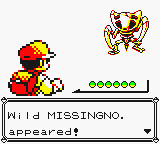
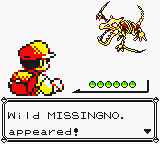
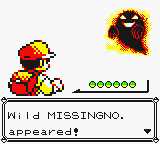
MissingNo. #000 in Pokémon Yellow has a different glitch name and appearance, and is known as 3TrainerPoké:
Lastly, in Pokémon Yellow the MissingNo. with internal ID 0xFF is known as “Q” and, even though it features roughly the same characteristics and features of Charizard ‘M from Pokémon Red and Blue, it has a different, glitched look:
APPENDIX: MISSINGNO. IN THE FOLLOWING GENERATIONS
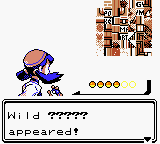
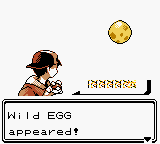
In Gold and Silver there are 5 MissingNo.: Red MissingNo. (index 0x00), Yellow MissingNo. (index 0xFC), Golden MissingNo. (index 0xFE), Silver MissingNo. (index 0xFF), and the Egg (index 0xFD). Here the MissingNo. are called “?????” (except for the Egg) and they do not have all the same effects as they have in Red and Blue (save for a few exceptions). Their color remains consistent across Pokémon Gold, Silver, and Crystal, and across localizations - the only exception being the Egg in Crystal, which sprite is, apparently, slightly glitched (by two dots out of place). The 5 MissingNo. represent in all respects the 5 missing Pokémon to reach the maximum total of 255 species (out of the maximum overall total of 256, if the zero 0x00 is included).
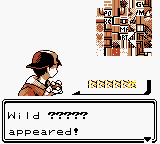
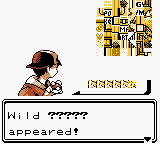
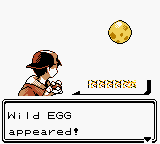
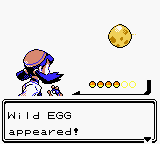
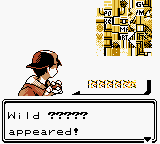
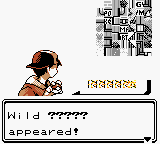
The MissingNo. are often found thanks to the “Bad Clone”, i.e. a MissingNo. #000 which occurs if a Pokémon is cloned too many times: one of the last clones, instead of being cloned, becomes a Bad Clone. The Bad Clone can cause fatal side effects, such as the accumulation of 50 Pokémon in the team (erroneous flags on the total number of Pokémon in a team, a glitch not too dissimilar to the infamous DokoKashira Door Glitch of the 1st Gen. Japanese games) and the disruption of game progress. To get rid of the Bad Clone you have to go to the National Park, start the Tuesday contest, have the Pokémon taken, and upon returning the Bad Clone will not be returned. However, the Bad Clone is the only way to get Celebi without a GS Ball, Gameshark or Nintendo events that died out decades ago.
Another very noteworthy of these glitch “Pokémon” is Silver MissingNo., which, having as internal index number 0xFF, behaves as a terminator of lists, exactly like in the case of Charizard ‘M in Pokémon Red and Blue and “Q” in Pokémon Yellow, thus allowing more sophisticated glitches to be performed - for example, by exploiting the Trade Center and the Time Capsule.
Unlike the first generation games, in Gold and Silver there are even “Missing Unown”, for more or less the same reasons, and they too can cause more or less amazing effects...
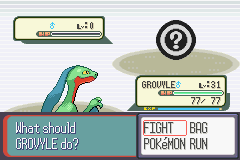
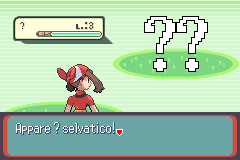
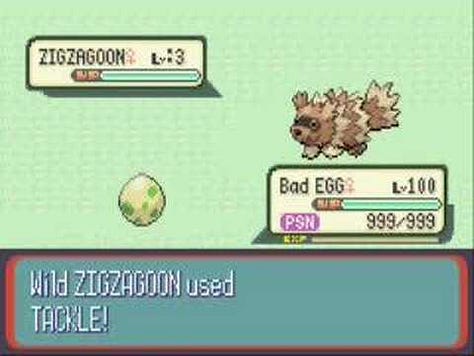
In the third generation games MissigNo has been stabilized. There are two main types: “??” and MissingNo #000.
"??" are the ones usually used in hacks to create Mugshots: they were originally used in the game data used for the 27 Unown; successively, the system to represent the alternative forms of Pokémon was changed so that it would work without resorting to additional Internal Pokémon IDs. “??” it is the safest of the MissingNo., it does not cause problems. On the other hand, MissingNo. #000 is handled by the game more erraticly, causing a few side issues.
In addition to these two, there are also more exotic (and even dangerous) forms of MissingNo. in Third Generation Pokémon games. First of all, there is also a MissingNo. called “act.” which is more anomalous than “??”.
On the other hand, the dangerous one is Bad Egg, a.k.a. Plague Egg, which has devastating effects on the game, including filling the backpack endlessly with junk, multiplying and depositing itself on the team's Pokémon and on the Pokémon in the box, and sometimes it even transforms other Pokémon into Bad Egg (truly an evil plague). Bad Egg often originates with intensive (mis)use of the Gameshark. It originates as an evil form of anti-copying device whereby the game auto-generates a Bad Egg if it detects irregularities in the Checksums of the RAM memory in use (as for example happens when cartridges were copied with obsolete methods), as well as a “punitive” anti-GameShark measure (which is why the MasterCode is used from the Game Boy Advance onwards). If the Bad Egg hatches, the game freezes, forcing players to bid goodbye to their save game. However, just emptying the 1st place of Box 1 can help reduce the chance of encountering Bad Egg.
80C: Article, screenshots.
Additional screenshots sourced from Google Images and Bulbapedia.



